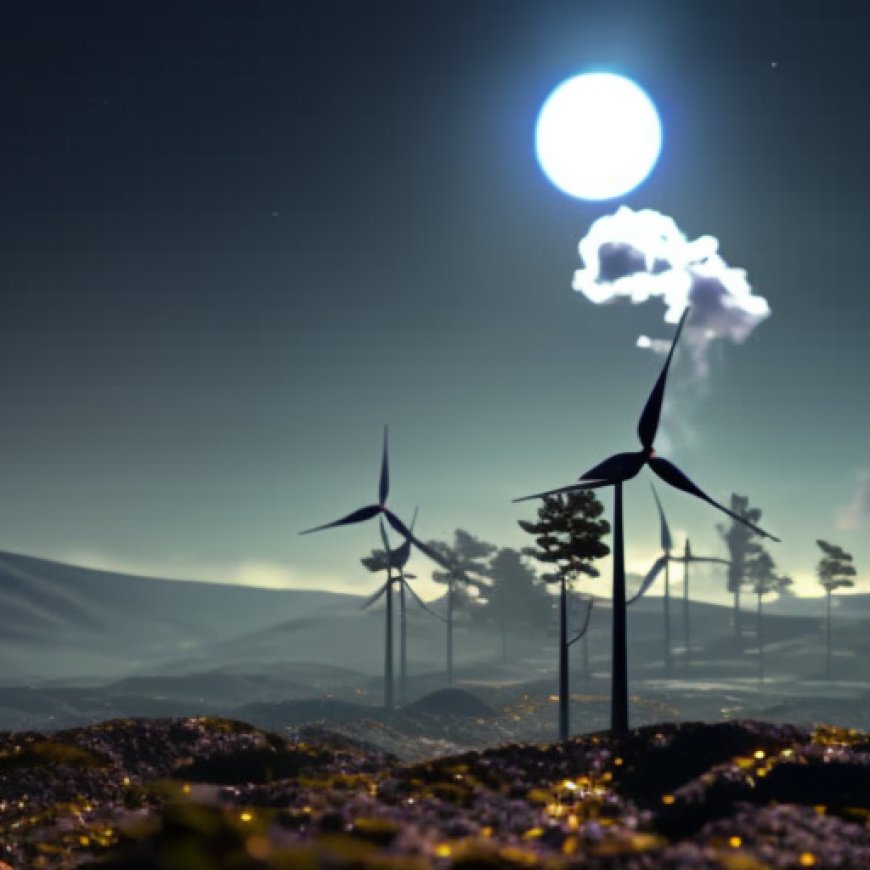Exploring alternative energy sources: The future of renewable power
Exploring alternative energy sources: The future of renewable power The Daily Star


Renewable Energy: A Path Towards Sustainable Development
Introduction
Renewable energy sources, such as solar, wind, hydroelectric power, and biomass, offer a sustainable solution to our growing energy needs. As the world faces the detrimental effects of climate change, it is crucial to shift our focus towards greener and cleaner alternatives. This report explores the future of renewable energy and its potential to contribute to the achievement of the Sustainable Development Goals (SDGs).
The Importance of Renewable Energy
Renewable energy is derived from natural sources that replenish at a faster rate than they are consumed. Unlike conventional fuel sources like coal, oil, and natural gas, renewable energy sources are virtually limitless. The finite nature of non-renewable energy sources not only poses a threat to our current energy needs but also has irreversible implications for the environment and biodiversity.
The Impact of Non-Renewable Energy
Fossil fuels, which are carbon-based non-renewable energy sources, dominate the global energy landscape. However, the burning of fossil fuels releases large amounts of carbon dioxide into the atmosphere, contributing to global warming and air pollution. The exponential growth of human civilization has led to an ever-increasing demand for energy, surpassing the capacity of renewable sources to keep up.
Advantages of Renewable Energy
Renewable energy offers several advantages over non-renewable sources. Firstly, it emits significantly less carbon dioxide, reducing greenhouse gas emissions and mitigating climate change. Additionally, renewable energy sources are inexhaustible, ensuring a sustainable supply of energy for future generations. Furthermore, these cleaner fuels cause minimal air pollution, promoting a healthier environment and improved public health.
Sustainable Development Goals and Renewable Energy
The use of renewable energy aligns with several SDGs, including:
- SDG 7: Affordable and Clean Energy – Renewable energy expands access to energy in developing countries, particularly in non-grid-connected or remote areas. It diversifies energy supply and creates new job opportunities.
- SDG 13: Climate Action – By reducing greenhouse gas emissions, renewable energy contributes to global efforts to combat climate change and its impacts.
- SDG 15: Life on Land – The adoption of renewable energy helps protect terrestrial ecosystems and biodiversity by reducing pollution and minimizing habitat destruction.
Types of Renewable Energy Sources
Solar Energy
Solar energy is the most well-known and abundant source of renewable energy. The sun provides an inexhaustible supply of energy, with the amount intercepted by the Earth exceeding our total energy requirements for a year. Solar panels convert sunlight into electricity, making it the cheapest form of electricity. The longevity of solar panels, lasting up to 30 years, ensures long-term sustainability.
Wind Energy
Wind energy has been harnessed for thousands of years. Windmills were used in ancient times for various purposes, such as grinding grain and pumping water. Today, turbines located on land or offshore harness the power of wind to generate electricity. The technical potential for wind energy exceeds global electricity production, highlighting its vast capacity.
Hydroelectric Power
Hydroelectric power utilizes the movement of water from higher to lower elevations to produce electricity. By constructing dams, water flow is controlled, creating reservoirs that spin turbines to generate power. Unlike solar and wind energy, hydroelectric power is not weather-dependent, making it a reliable source of clean energy. However, the environmental impact of dams and the accumulation of silt pose challenges.
Geothermal Energy
Geothermal energy harnesses the heat within the Earth to produce electricity. This clean source of energy is scarce globally but widely used in countries like Iceland, where almost 90% of residents rely on geothermal energy for heating. By extracting heat from underground reservoirs, geothermal power contributes to a sustainable energy future.
Other Sources of Energy
In addition to solar, wind, hydroelectric, and geothermal energy, other notable sources include tidal energy and biomass energy. Tidal energy utilizes ocean tides to generate electricity, while biomass energy converts waste into fuel, reducing economic and environmental costs.
Conclusion
Renewable energy offers a promising path towards sustainable development. By embracing renewable sources, we can address the challenges posed by climate change, promote clean and affordable energy access, and protect the environment and biodiversity. The achievement of the SDGs relies on our collective efforts to transition to a greener and more sustainable energy future.
SDGs, Targets, and Indicators
1. Which SDGs are addressed or connected to the issues highlighted in the article?
- SDG 7: Affordable and Clean Energy
- SDG 13: Climate Action
- SDG 15: Life on Land
2. What specific targets under those SDGs can be identified based on the article’s content?
- SDG 7.2: Increase substantially the share of renewable energy in the global energy mix.
- SDG 13.2: Integrate climate change measures into national policies, strategies, and planning.
- SDG 15.5: Take urgent and significant action to reduce degradation of natural habitats, halt the loss of biodiversity, and protect and prevent the extinction of threatened species.
3. Are there any indicators mentioned or implied in the article that can be used to measure progress towards the identified targets?
- Indicator for SDG 7.2: Proportion of total final energy consumption from renewable sources.
- Indicator for SDG 13.2: Number of countries with integrated policies, strategies, and planning for climate change mitigation, adaptation, impact reduction, and early warning.
- Indicator for SDG 15.5: Red List Index, which measures trends in the overall extinction risk to species.
4. Table: SDGs, Targets, and Indicators
| SDGs | Targets | Indicators |
|---|---|---|
| SDG 7: Affordable and Clean Energy | Increase substantially the share of renewable energy in the global energy mix. | Proportion of total final energy consumption from renewable sources. |
| SDG 13: Climate Action | Integrate climate change measures into national policies, strategies, and planning. | Number of countries with integrated policies, strategies, and planning for climate change mitigation, adaptation, impact reduction, and early warning. |
| SDG 15: Life on Land | Take urgent and significant action to reduce degradation of natural habitats, halt the loss of biodiversity, and protect and prevent the extinction of threatened species. | Red List Index, which measures trends in the overall extinction risk to species. |
The article addresses the issues related to renewable energy and its impact on climate change. It connects to SDG 7 (Affordable and Clean Energy) as it discusses the importance of renewable energy sources in reducing carbon dioxide emissions and air pollution. It also relates to SDG 13 (Climate Action) as it emphasizes the need to integrate climate change measures into national policies and strategies. Additionally, the article touches upon SDG 15 (Life on Land) by highlighting the importance of taking action to protect natural habitats and prevent the extinction of threatened species.
Based on the article’s content, the specific targets that can be identified are SDG 7.2 (increase renewable energy share), SDG 13.2 (integrate climate change measures), and SDG 15.5 (take action to reduce degradation and protect biodiversity).
The article mentions indicators that can be used to measure progress towards these targets. For SDG 7.2, the indicator is the proportion of total final energy consumption from renewable sources. For SDG 13.2, the indicator is the number of countries with integrated policies and strategies for climate change mitigation and adaptation. For SDG 15.5, the indicator is the Red List Index, which measures the overall extinction risk to species.
Overall, the article highlights the importance of renewable energy, the need for climate action, and the significance of protecting natural habitats and biodiversity. These align with specific SDGs, targets, and indicators that can be used to measure progress towards sustainable development.
Behold! This splendid article springs forth from the wellspring of knowledge, shaped by a wondrous proprietary AI technology that delved into a vast ocean of data, illuminating the path towards the Sustainable Development Goals. Remember that all rights are reserved by SDG Investors LLC, empowering us to champion progress together.
Source: thedailystar.net

Join us, as fellow seekers of change, on a transformative journey at https://sdgtalks.ai/welcome, where you can become a member and actively contribute to shaping a brighter future.







